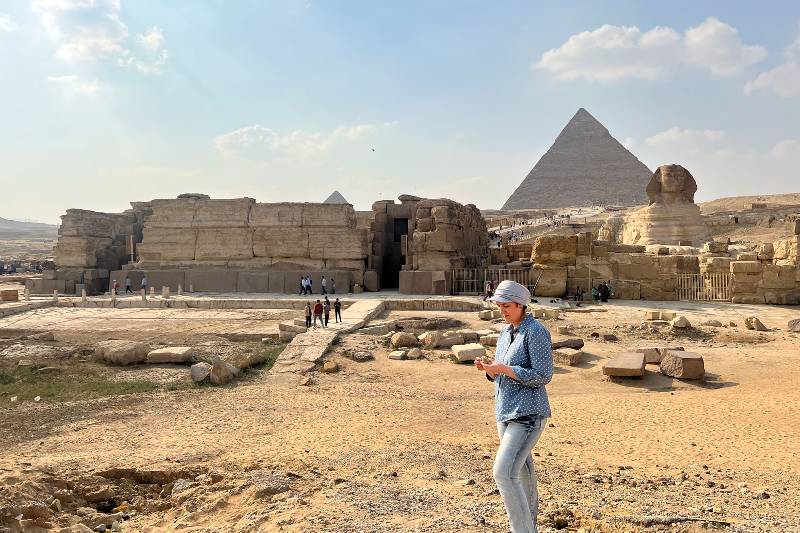A groundbreaking discovery has shed new light on the construction of Egypt’s iconic pyramids, offering fresh insights into the ingenuity of ancient builders and the crucial role of the Nile River in shaping one of history’s greatest civilizations.
Unearthing the Ahramat: A Lost Branch of the Nile
Researchers led by Professor Eman Ghoneim of the University of North Carolina Wilmington have uncovered evidence of a long-lost branch of the Nile River that once flowed near the largest concentration of Egyptian pyramids. This ancient waterway, which the team proposes naming “Ahramat” (Arabic for “pyramids”), may explain why these massive monuments were built in what is now a narrow, inhospitable strip of the Saharan Desert.
Using a combination of satellite imagery, geophysical surveys, and sediment analysis, the research team mapped the course of this ancient river branch. Their findings, published in Communications Earth & Environment, offer the first detailed map of a major ancient Nile tributary and its connection to the largest pyramid fields of Egypt.
“Many of us who are interested in ancient Egypt are aware that the Egyptians must have used a waterway to build their enormous monuments, like the pyramids and valley temples, but nobody was certain of the location, the shape, the size, or proximity of this mega waterway to the actual pyramids site,” Ghoneim explained.
Climate Change and the Shifting Nile
The study suggests that environmental changes played a significant role in shaping ancient Egyptian civilization. Approximately 4,200 years ago, a major drought led to increased windblown sand accumulation, causing the Ahramat branch to migrate eastward and eventually silt up.
This climate event coincides with the end of the Old Kingdom period in ancient Egypt, a time of political instability and reduced pyramid construction. The researchers’ findings provide compelling evidence for the link between environmental changes and major shifts in ancient civilizations.
The discovery of the Ahramat branch offers a logical explanation for the concentration of pyramids along this desert strip near the ancient capital of Memphis. During the peak of pyramid construction, which spanned about 1,000 years starting around 4,700 years ago, this river branch would have provided easy access for transporting massive building materials.
Further supporting this theory, the research team found that many pyramids had causeways ending at the proposed riverbanks of the Ahramat branch. This suggests that the river was indeed used as a vital transportation route for construction materials.
Why it matters: This research not only enhances our understanding of ancient Egyptian engineering and logistics but also highlights the profound impact of environmental changes on human civilization. By revealing the intricate relationship between the Nile River and the construction of Egypt’s most iconic monuments, this study offers valuable insights into how ancient societies adapted to and utilized their natural environment.
The discovery of the Ahramat branch could have significant implications for future archaeological work in Egypt. As Professor Ghoneim and her colleagues suggest, identifying more extinct Nile branches could help prioritize archaeological excavations along their banks, potentially leading to new discoveries and better protection of Egyptian cultural heritage.
This research also serves as a reminder of the vulnerability of human civilizations to climate change. The shifting course of the Nile and its impact on ancient Egyptian society parallels modern concerns about how changing climate patterns might affect our own cities and infrastructure.
Looking ahead, this study opens up new avenues for interdisciplinary research combining archaeology, geology, and climatology. Future studies might focus on:
1. Detailed mapping of other lost Nile branches and their potential archaeological significance.
2. Advanced computer modeling of ancient river systems to predict locations of undiscovered archaeological sites.
3. Further investigation into how climate changes affected other ancient civilizations and what lessons we can draw for our own future.
As we continue to unravel the mysteries of our past, discoveries like the Ahramat branch remind us of the ingenuity of our ancestors and the enduring influence of the natural world on human civilization.


























































